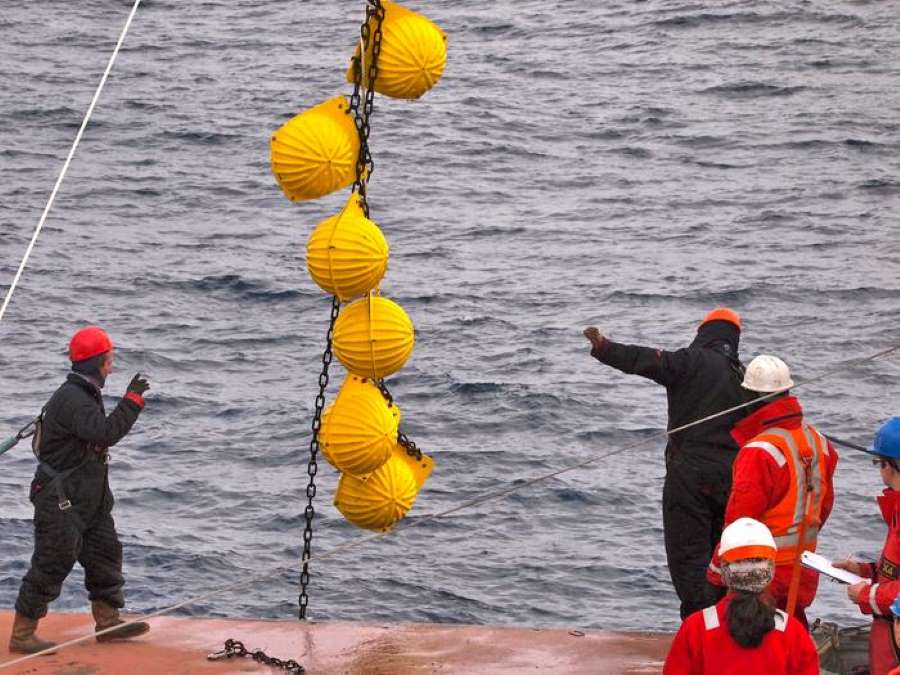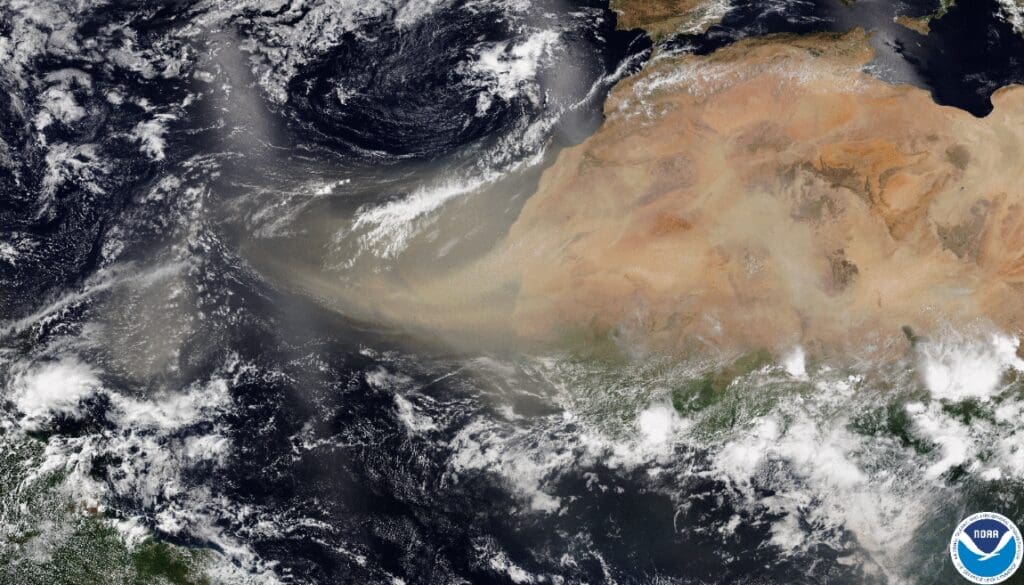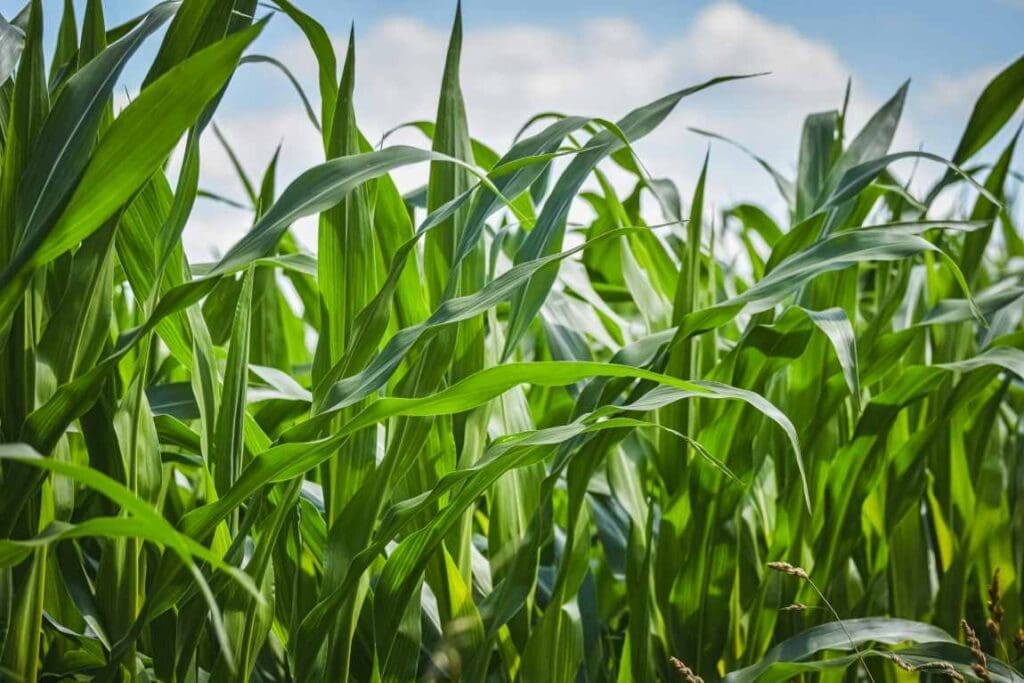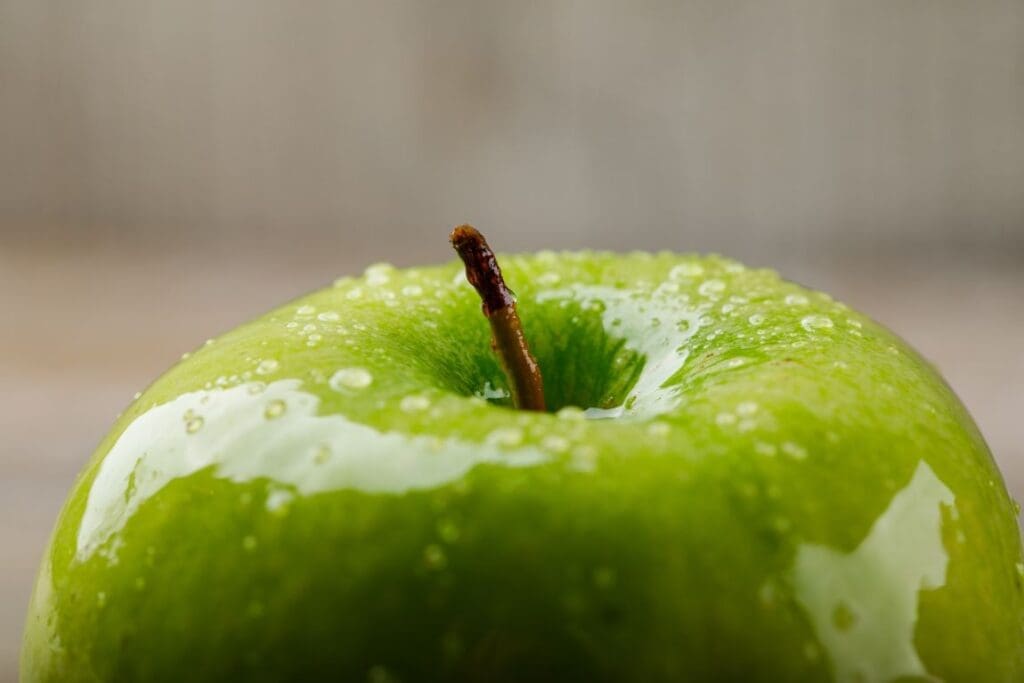Discover the latest articles from leading science journals in the Muser Press weekly roundup, showcasing impactful research published this week.
Long-term data prompts rethink on regional differences in ocean carbon sequestration
A new publication by researchers from the Department of Earth Sciences at the University of Oxford shows that the relationship between water temperature and the main biological mechanism by which the ocean captures atmospheric carbon dioxide (CO2) is far more complicated than previously thought.
Drawing on long-term time-series data from oceanographic stations such as the Bermuda Atlantic Time-Series, the research highlights how the quality of currently available data limits our understanding of this critical mechanism in the carbon cycle.

The biological carbon pump (BCP) is a critical part of Earth’s carbon cycle, removing CO2 — the main greenhouse gas responsible for global warming — from the atmosphere and locking it away in the deep ocean. This occurs when microscopic organisms called phytoplankton take in CO2 during photosynthesis or by creating calcium carbonate shells, then die and sink through the water column, carrying the CO2 with them.
Known as “marine snow”, this shower of biogenic particulate material transfers an estimated 10 billion tonnes of carbon every year into the ocean’s interior, roughly the same amount as that emitted annually by fossil fuel burning. As a result, it plays an important role in regulating the amount of CO2 in the atmosphere and hence Earth’s climate.
Up to now, it has been presumed by ocean scientists that water temperature is the main factor determining how efficient the BCP transfers atmospheric carbon to the deep ocean, and therefore that it would vary geographically with latitude. However, the results from the new study put this into question.
The researchers used long-term, good-quality data from six locations across the globe, enabling them to account for seasonal variations. This was combined with data from a range of national and international research projects, using a variety of marine particle sampling methods –including sediment traps, radiometric techniques, and underwater cameras.
Using this amalgamation of data, the research team were unable to definitively conclude that variations in the transfer efficiency of the BCP over the global ocean are driven by temperature. This is largely because variations in the data — stemming from differences in experimental methods or natural fluctuations (just as the atmosphere, the ocean also has “weather”) — masked any potential trends, raising the question of whether such trends exist at all.
Lead researcher Dr Anna Rufas (Department of Earth Sciences, University of Oxford) said: “Potentially the absence of clear patterns can be explained by the differences between methods across research projects, principally because there are no standard method protocols. Therefore, there are large differences between the approaches of research groups studying this problem.”
This could be addressed by protocol standardisation for the collection of marine particle data. The researchers also call for improved data collection in traditionally undersampled areas, such as polar regions in the winter, which are crucial for ocean carbon sequestration.
Co-author Professor Samar Khatiwala commented: “Anyone who has been on a ship knows that the ocean is a pretty ‘noisy’ place. That makes identifying patterns incredibly challenging, even more so for complex processes such as the BCP, where the data are spotty at best and often collected using very different measurement techniques. A relationship may well exist in nature but this careful analysis makes us question some long-held assumptions.”
Co-author Professor Heather Bouman adds: “The BCP provides an essential ecosystem service, naturally removing excess CO2 from the atmosphere and regulating the temperature of our planet. In a world where CO2 removal techniques are becoming increasingly important, understanding this fundamental ocean process is vital for recognising its potential contributions in the coming decades.”
Journal Reference:
Rufas, A., Khatiwala, S., Bisson, K. M., Martin, A. P., & Bouman, H. A., ‘Can we constrain geographical variability in the biological carbon pump’s transfer efficiency from observations?’, Geophysical Research Letters 52, e2024GL111203 (2025). DOI: 10.1029/2024GL111203
Article Source:
Press Release/Material by University of Oxford
Other science articles published this week
More autumn tropical cyclone genesis in the South China Sea during El Niño to La Niña transition
Pan, L., Chen, J., Wang, X. et al. (2025) | DOI: 10.1038/s41612-025-00947-8 | npj Climate and Atmospheric Science
Warming triggers snowfall fraction loss Thresholds in High-Mountain Asia
Li, Y., Chen, Y., Sun, F. et al. (2025) | DOI: 10.1038/s41612-025-00935-y | npj Climate and Atmospheric Science
Progressively smaller glacier lake outburst floods despite worldwide growth in lake area
Veh, G., Wang, B.G., Zirzow, A. et al. (2025) | DOI: 10.1038/s44221-025-00388-w | Nature Water
Agricultural fertilization significantly enhances amplitude of land-atmosphere CO2 exchange
Lombardozzi, D.L., Wieder, W.R., Keppel-Aleks, G. et al. (2025) | DOI: 10.1038/s41467-025-56730-z | Nature Communications
Drivers of marine heatwaves in coral bleaching regions of the Red Sea
Darmaraki, S., Krokos, G., Genevier, L. et al. (2025) | DOI: 10.1038/s43247-025-02096-5 | Communications Earth & Environment
Future climate change and the distributional shift of the common vampire bat, Desmodus rotundus
Van de Vuurst, P., Gohlke, J.M. & Escobar, L.E. (2025) | DOI: 10.1038/s41598-025-87977-7 | Scientific Reports
Two contrasting tropical convection modes from the eastern Pacific to northern Africa that drive Eurasian teleconnections in boreal summer
Zhu, Z., Shao, L., Lu, R. et al. (2025) | DOI: 10.1038/s41612-025-00944-x | npj Climate and Atmospheric Science
Spatiotemporal analysis of sea ice in the Weddell Sea of Antarctic based on GTWR
Ding, Y.R., Liu, X., Dai, X.F. et al. (2025) | DOI: 10.1038/s41598-025-90106-z | Scientific Reports
Meltwater Pulse 1A sea-level-rise patterns explained by global cascade of ice loss
Coonin, A.N., Lau, H.C.P. & Coulson, S. (2025) | DOI: 10.1038/s41561-025-01648-w | Nature Geoscience
Atmospheric circulation to constrain subtropical precipitation projections
Chemke, R., Yuval, J. (2025) | DOI: 10.1038/s41558-025-02266-5 | Nature Climate Change
Deep ocean mixing mismatch between model and observational estimates
Oka, A. (2025) | DOI: 10.1038/s43247-025-02027-4 | Communications Earth & Environment
Global Future Drought Layers Based on Downscaled CMIP6 Models and Multiple Socioeconomic Pathways
Araujo, D.S.A., Enquist, B.J., Frazier, A.E. et al. (2025) | DOI: 10.1038/s41597-025-04612-w | Scientific Data
Age inequality in temperature-related fall mortality among old people in China in a warming climate
Lin, Y., Qi, J., Hu, J. et al. (2025) | DOI: 10.1038/s41612-025-00939-8 | npj Climate and Atmospheric Science
Atlantic oceanic droughts do not threaten Asian water tower
Zhao, Y., Xu, C., Yu, X. et al. (2025) | DOI: 10.1038/s41586-024-08357-1 | Nature
Large-scale loss of Mediterranean coastal marshes under rising sea levels by 2100
Schuerch, M., Kiesel, J., Boutron, O. et al. (2025) | DOI: 10.1038/s43247-025-02099-2 | Communications Earth & Environment
Assessing the impact of artificial snowmaking on Dagu Glacier variation: a case study from a tourism glacier
Xie, Y., Wang, F., Zhang, H. et al. (2025) | DOI: 10.1038/s41598-025-89722-6 | Scientific Reports
Beaufort sea ice loss contributes to enhanced health exposure to fire weather over Southeast Asia
Liu, G., Li, J., Ying, T. et al. (2025) | DOI: 10.1038/s41612-025-00954-9 | npj Climate and Atmospheric Science
Late Quaternary fluctuation in upper range limit of trees shapes endemic flora diversity on the Tibetan Plateau
Xu, J., Wang, T., Wang, X. et al. (2025) | DOI: 10.1038/s41467-025-57036-w | Nature Communications
Rapid decline and mortality of a Pleistocene-aged forest now submerged in the northern Gulf of Mexico, USA
Harley, G.L., DeLong, K.L., Lofverstrom, M. et al. (2025) | DOI: 10.1038/s41612-025-00951-y | npj Climate and Atmospheric Science
Evidence for Atlantic Ocean forcing the atmosphere and the negative role of model bias
Haarsma, R., Drijfhout, S. (2025) | DOI: 10.1038/s43247-025-02123-5 | Communications Earth & Environment
Extreme heat affects blueberry pollen nutrition, bee health, and plant reproduction
Walters, J., Fisher, R., Sharkey, T.D. et al. (2025) | DOI: 10.1038/s41598-025-90676-y | Scientific Reports
APEC climate center multi-model ensemble dataset for seasonal climate prediction
Yhang, YB., Lim, CM. & Jeong, D. (2025) | DOI: 10.1038/s41597-025-04643-3 | Scientific Data
Typhoon induced mesoscale cyclonic eddy a long neglected linkage between atmosphere ocean and climate
Lin, JY., Ho, H., Gopalakrishnan, G. et al. (2025) | DOI: 10.1038/s41612-025-00946-9 | npj Climate and Atmospheric Science
Investigation into the temporal impacts of drought on vegetation dynamics in China during 2000 to 2022
Du, Y., Lv, S., Wang, F. et al. (2025) | DOI: 10.1038/s41598-025-90692-y | Scientific Reports
Vertical structure of subsurface marine heatwaves in a shallow nearshore upwelling system
Plume, G., Walter, R.K., Cobb, I. et al. (2025) | DOI: 10.1038/s41598-025-90565-4 | Scientific Reports
A global dataset of fossil fungi records from the Cenozoic
Hodgson, E., McCoy, J., Webber, K. et al. (2025) | DOI: 10.1038/s41597-025-04553-4 | Scientific Data
Transitioning to sustainable energy and enhanced environmental quality in Somalia through renewable energy, globalisation and trade openness
Abdi, A.H., Warsame, A.A., Sugow, M.O. et al. (2025) | DOI: 10.1038/s41598-025-87819-6 | Scientific Reports
A twenty-first century structural change in Antarctica’s sea ice system
Raphael, M.N., Maierhofer, T.J., Fogt, R.L. et al. (2025) | DOI: 10.1038/s43247-025-02107-5 | Communications Earth & Environment
Impact of the centennial changes in ENSO on the rise of the Chinese Qing empire
Sun, W., Wang, B., Liu, J. et al. (2025) | DOI: 10.1038/s41612-025-00950-z | npj Climate and Atmospheric Science
Limited influence of the Agulhas leakage on the Atlantic Meridional Overturning Circulation under present-day climate conditions
Zhang, R., Sun, S., Chen, Z. et al. (2025) | DOI: 10.1038/s43247-025-02097-4 | Communications Earth & Environment
Compounding effects of climate change and WUI expansion quadruple the likelihood of extreme-impact wildfires in California
Kumar, M., AghaKouchak, A., Abatzoglou, J.T. et al. (2025) | DOI: 10.1038/s44304-025-00067-6 | npj Natural Hazards
Anomalous temperature in North Tropical Atlantic linked to Brazilian Cerrado fires
Kim, HJ., Kim, JS., Ham, YG. et al. (2025) | DOI: 10.1038/s41612-025-00945-w | npj Climate and Atmospheric Science
A new last two millennium reanalysis based on hybrid gain analog offline EnKF and an expanded proxy database
Wu, F., Ning, L., Liu, Z. et al. (2025) | DOI: 10.1038/s41612-025-00961-w | npj Climate and Atmospheric Science
Forcing mechanisms of the half-precession cycle in the western equatorial Pacific temperature
Wu, Z., Yin, Q., Berger, A. et al. (2025) | DOI: 10.1038/s41467-025-57076-2 | Nature Communications
All hazards are multihazards, few of them are natural
Van Wyk de Vries, M. (2025) | DOI: 10.1038/s44304-025-00071-w | npj Natural Hazards
Injecting solid particles into the stratosphere could mitigate global warming but currently entails great uncertainties
Vattioni, S., Peter, T., Weber, R. et al. (2025) | DOI: 10.1038/s43247-025-02038-1 | Communications Earth & Environment
Ice core evidence for the Los Chocoyos supereruption disputes millennial-scale climate impact
Innes, H.M., Hutchison, W., Sigl, M. et al. (2025) | DOI: 10.1038/s43247-025-02095-6 | Communications Earth & Environment
Cold spells over Greenland during the mid-Pliocene Warm Period
Sousa, I.M.C., Hillaire-Marcel, C., de Vernal, A. et al. (2025) | DOI: 10.1038/s41467-025-56996-3 | Nature Communications
Temporal adjustment approach for high-resolution continental scale modeling of soil organic carbon
Bokati, L., Somenahally, A., Kumar, S. et al. (2025) | DOI: 10.1038/s41598-025-89503-1 | Scientific Reports
East Antarctic tectonic basin structure and its implications for ice-sheet modeling and sea-level projections
Hansen, S.E., Emry, E.L. (2025) | DOI: 10.1038/s43247-025-02140-4 | Communications Earth & Environment
A zonal asymmetry in boreal winter surface temperature trend and its recent reversal over the Northern Hemisphere continents
Jun, YJ., Son, SW. (2025) | DOI: 10.1038/s41612-025-00963-8 | npj Climate and Atmospheric Science
The impact of solar elevation angle on the net radiative effect of tropical cyclone clouds
Hu, L., Kim, DH., Tyo, J.S. et al. (2025) | DOI: 10.1038/s41612-025-00964-7 | npj Climate and Atmospheric Science
Waterfalls enhance regional methane emissions by enabling dissolved methane to bypass microbial oxidation
Rust, R.L., Frizzell, A. & Kessler, J.D. (2025) | DOI: 10.1038/s43247-025-02060-3 | Communications Earth & Environment
Quantifying Biodiversity’s Present and Future: Current Potentials and SSP-RCP-Driven Land Use Impacts
Yilin Cheng, Hongxi Liu, Jizeng Du, Yujun Yi (2025) | DOI: 10.1029/2024EF005191 | Earth’s Future
Investigating the Characteristics and Drivers of Slow Droughts and Flash Droughts: A Multi-Temporal Scale Drought Identification Framework
Qi, Z., Ye, Y., Cai, Y., Yuan, C., Xie, Y., Cheng, G., et al. (2025) | DOI: 10.1029/2024WR037181 | Water Resources Research
Is Reservoir Storage Effectively Utilized in the Southeastern US? A Regional Assessment to Improve Water Supply Availability Considering Potential Storage and Flood Scenarios
Levey, J. R., & Sankarasubramanian, A. (2025) | DOI: 10.1029/2024EF005176 | Earth’s Future
Effects of Cloud Cover on Surface Sublimation at 4,817 m a.s.l. on the Flat-Top August-One Glacier of the Northern Tibetan Plateau
Guo, S., Li, Y., Chen, R., & Han, C. (2025) | DOI: 10.1029/2024EA003778 | Earth and Space Science
Recent Decline in Global Ocean Evaporation Due To Wind Stilling
Ma, N., Zhang, Y., & Yang, Y. (2025) | DOI: 10.1029/2024GL114256 | Geophysical Research Letters
Convolutional Neural Networks Trained on Internal Variability Predict Forced Response of TOA Radiation by Learning the Pattern Effect
Rugenstein, M., Van Loon, S., & Barnes, E. A. (2025) | DOI: 10.1029/2024GL109581 | Geophysical Research Letters
Contrasting CO2 Dynamics in Seagrass Meadows Between Organic Carbon (OC)-Rich Reef and OC-Poor Terrestrial Sediments: Implications for Enhanced Alkalinity Production
Chou, W.-C., Fan, L.-F., Natividad, M. B., Chen, J.-J., Tang, Z.-W., Chen, H.-F., et al. (2025) | DOI: 10.1029/2024GL112373 | Geophysical Research Letters
Enhancing Sea Ice Concentration Resolution in a Northern Sea Route Strait Using a Generative Adversarial Network
Rocha, M. L., Lynch, A. H., & Bergen, K. J. (2025) | DOI: 10.1029/2024JH000281 | Journal of Geophysical Research: Machine Learning and Computation
Controls of Climate Seasonality and Vegetation Dynamics on the Seasonal Variability of Terrestrial Water Storage Under Diverse Climate Regimes
Wu, C., Yeh, P. J.-F., Yao, T., Gong, Z., Niu, J., & Yuan, S. (2025) | DOI: 10.1029/2024WR038065 | Water Resources Research
Communicating about “The End of Fossil Fuel” in a museum setting: a mixed-methods investigation of the climate museum
Badullovich N, Nesci A, Massie M, Kotcher J, Maibach E (2025) | DOI: 10.1371/journal.pclm.0000518 | PLOS Climate
Centering voices of scientists from marginalized backgrounds to understand experiences in climate adaptation science and inform action
Marjadi MN, Smith RA, Tu HF, Ajmani AM, Holland AR, Lopez BE, et al. (2025) | DOI: 10.1371/journal.pone.0318438 | PLoS ONE
Projection of irrigation water requirement in the south Mediterranean area using an explicit representation of irrigation processes into a land surface model: Case of the Tensift catchment (Morocco)
Moucha A, Jarlan L, Quintana-Segui P, Barella-Ortiz A, Le Page M, Munier S, et al. (2025) | DOI: 10.1371/journal.pwat.0000297 | PLOS Water
Climate change from B to Z: a cross-generational perception study in Spain
Divasson-J A, Aguayo-Mendoza A, Quesada C, Casado-Mansilla D and Borges CE (2025) | DOI: 10.3389/fenvs.2025.1511398 | Frontiers in Environmental Science
Glider observations in the Western Mediterranean Sea: their assimilation and impact assessment using four analysis and forecasting systems
Aydogdu A, Escudier R, Hernandez-Lasheras J, Amadio C, Pistoia J, Zarokanellos ND, Cossarini G, Remy E and Mourre B (2025) | DOI: 10.3389/fmars.2025.1456463 | Frontiers in Marine Science
Bridging different ways of knowing in climate change adaptation requires solution-oriented cross-cultural dialogue
Roos R and van der Sluijs J (2025) | DOI: 10.3389/fclim.2025.1544029 | Frontiers in Climate
Climate change will alter Amazonian bumblebees’ distribution, but effects are species-specific
Nunes-Silva P, Acosta AL, Borges RC, Freitas BM, Oliveira RC, Giannini TC and Imperatriz-Fonseca VL (2025) | DOI: 10.3389/frbee.2025.1510004 | Frontiers in Bee Science
Featured image credit: kjpargeter | Freepik




